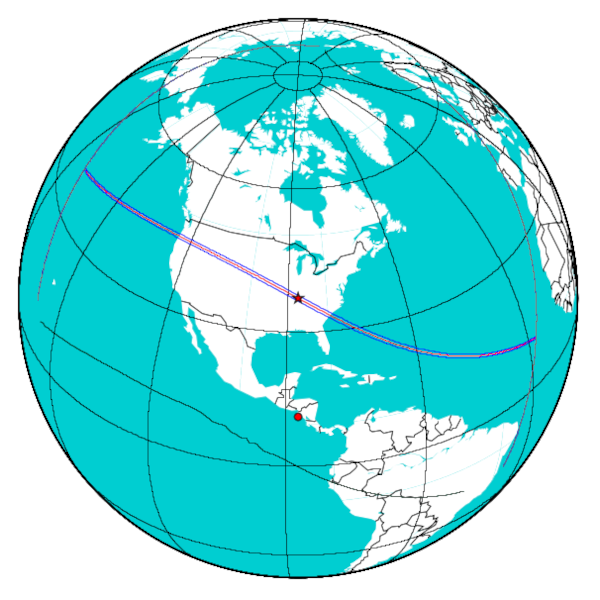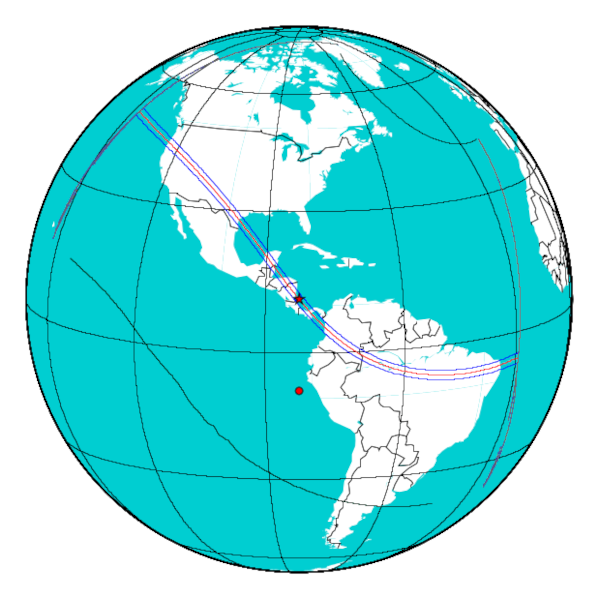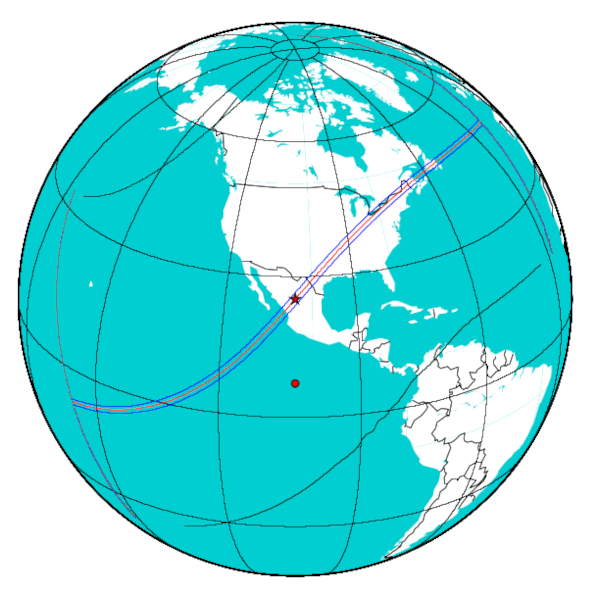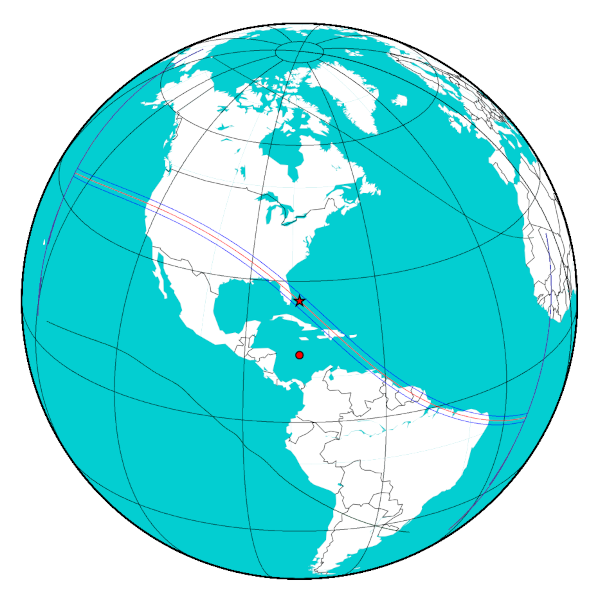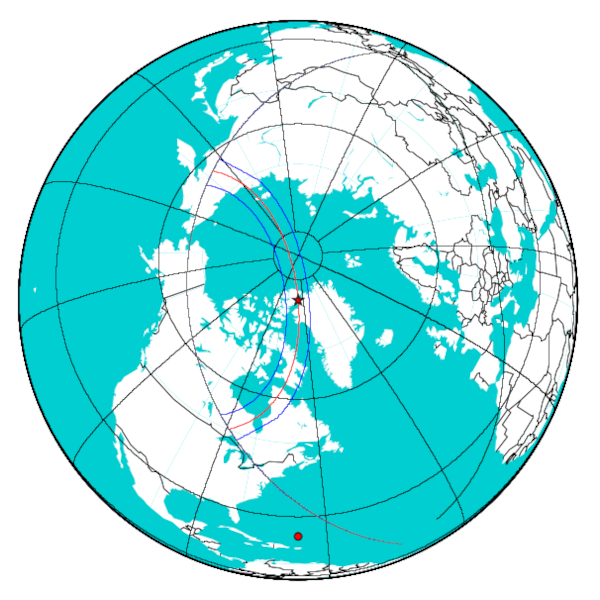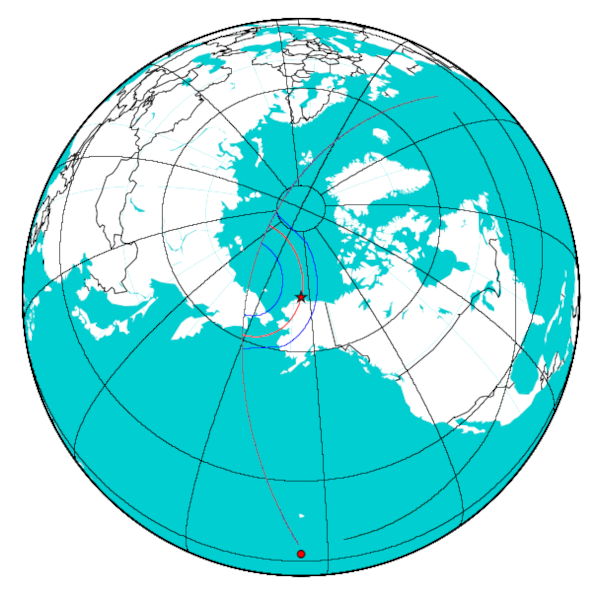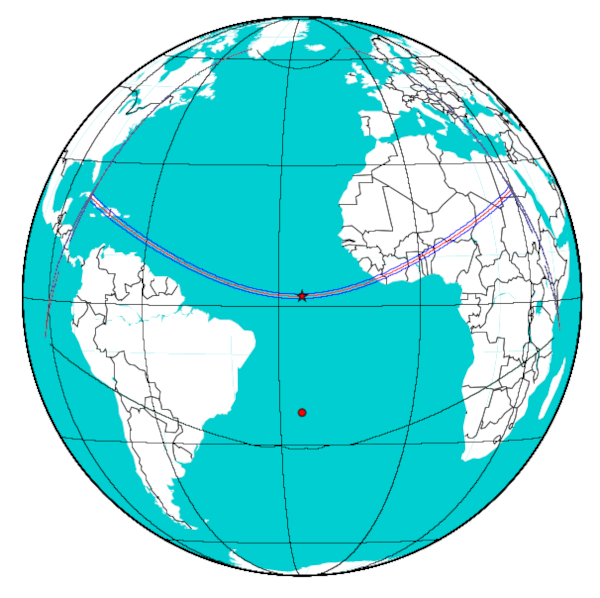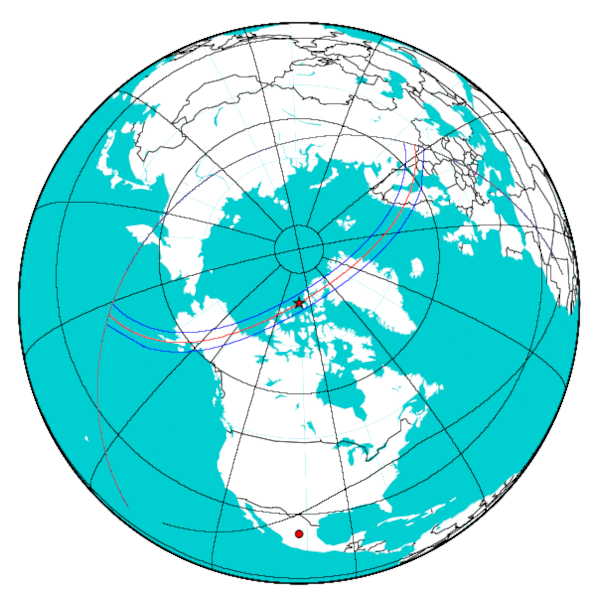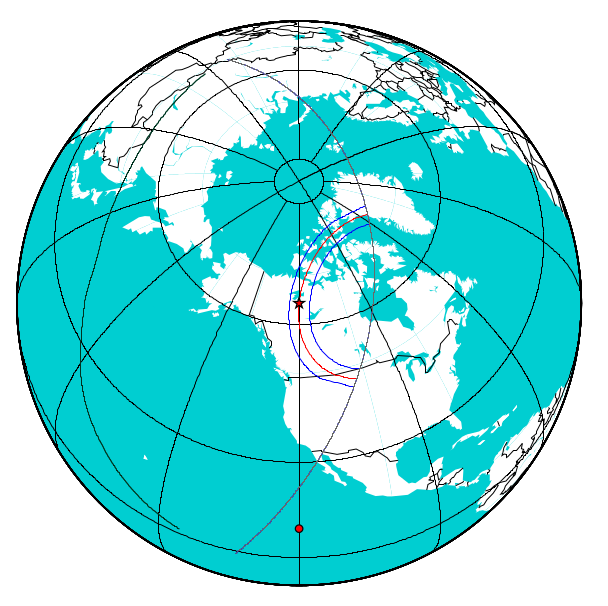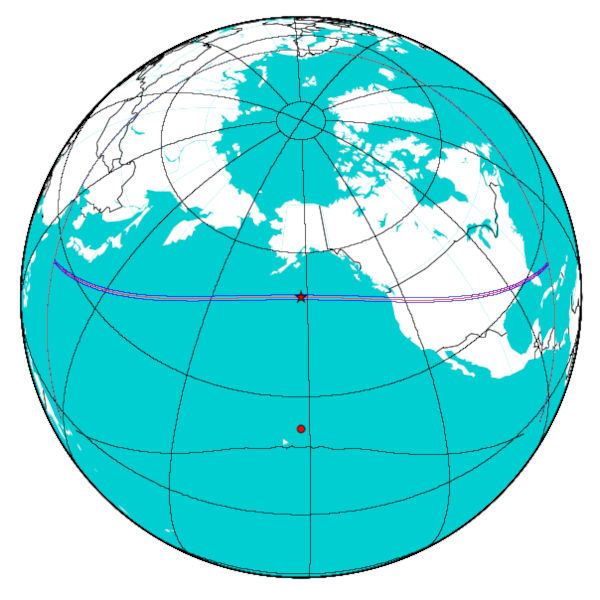More North American Eclipses
The eclipses shown below are all have paths of totality or annularity which cover relatively small parts of North America. While the tracks of these eclipses do span less of the continent, the each do provide an opportunity to see a spectacular eclipse if you are willing to do just a little more planning and perhaps a bit more traveling.
Four Great North American Eclipses
The eclipses listed below are total and annual eclipses whose paths of totality or annularity span major portions of North America. Of the four eclipses all occurring between 2017 and 2045, the eclipses of August 21, 2017, October 14, 2023, and August 12, 2045 span North American from west to east. In contrast, the eclipse of April 8, 2024, spans the North American continent largely from south to north. In all four of the eclipses, nearly the entire North American continent can observe at least a partial eclipse.
Next Chance To Experience an Eclipse in North America
The August 21, 2017 eclipse has, of course, come and gone. The internet is replete with testimonies of that spectacle. The remaining eclipses are great opportunities for enthusiasts from all over the world to experience a solar eclipse whose path is largely over land. The October 23, 2023 eclipse is annular. Accordingly, during the October 23 eclipse, eclipse trekkers will not see a substantial darkening of the sky. Additionally, it will be impossible to see the planets and stars emerge and the sun's corona will not appear. However, the obscuration of the sun will reach 95 % in the path of annularity, and I would expect Baily's Beads and the Diamond Ring effect to appear.
On the other hand, the three other eclipses are all total eclipses.
The April 8, 2024 Eclipse is a 'must see' event
The total solar eclipse of April 8, 2024, will likely be the most well-attended eclipse of the 21st century. Accordingly, it is not too early to make plans for a trip to the path of totality for the 2024 eclipse for enthusiasts anywhere in the world. For sites very near the center of the path of totality, there should be over 4 minutes of totality which is nearly twice that of the 2017 eclipse. As a result, visitors who reach these places will experience longer periods of darkness and will have longer views of the corona. The average viewer in the United States will have to travel longer to see the eclipse. However, weather-permitting, those viewers will have a longer eclipse experience than the August 2017 eclipse provided.
Eclipses of Historical Note
These eclipses crossed the United States during the early parts of the 20th century.
